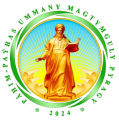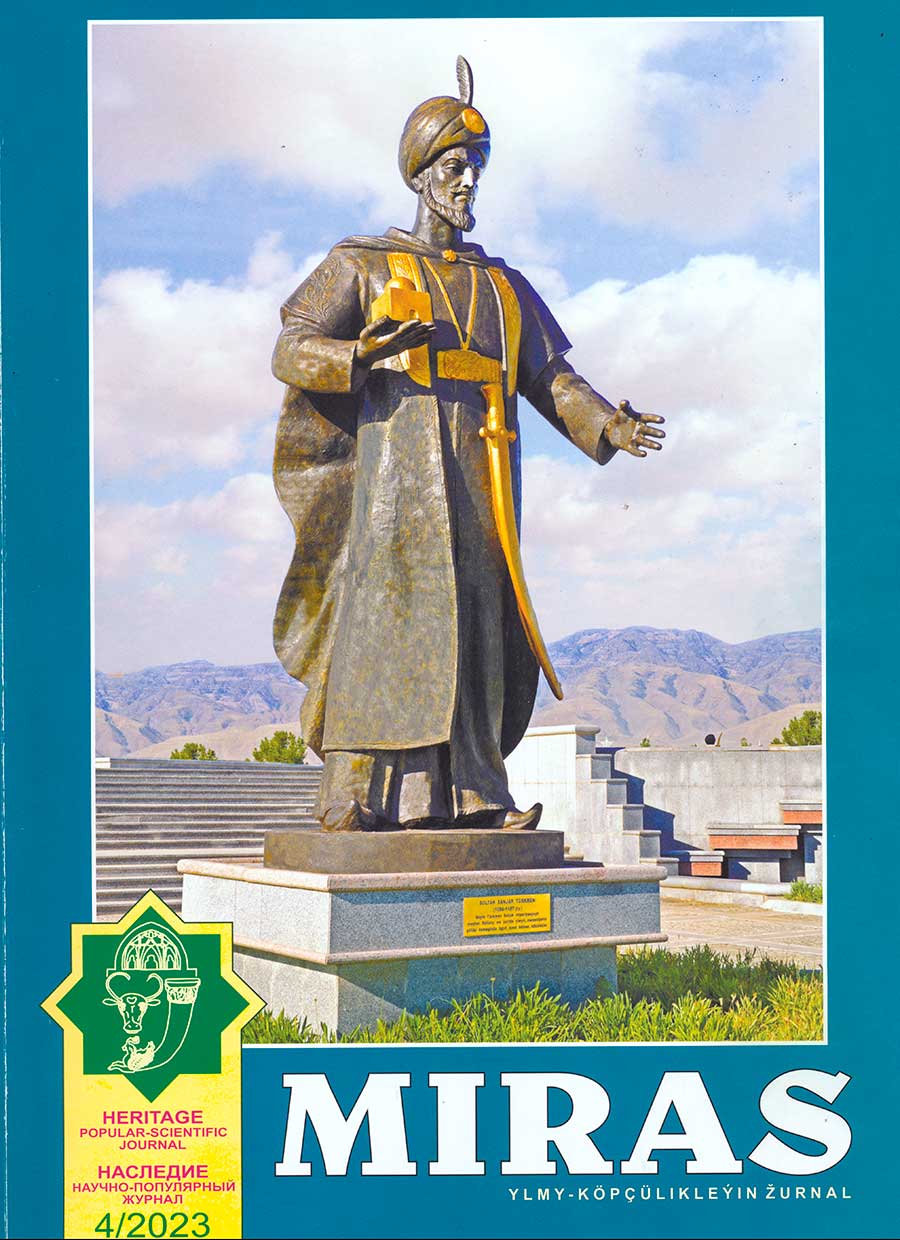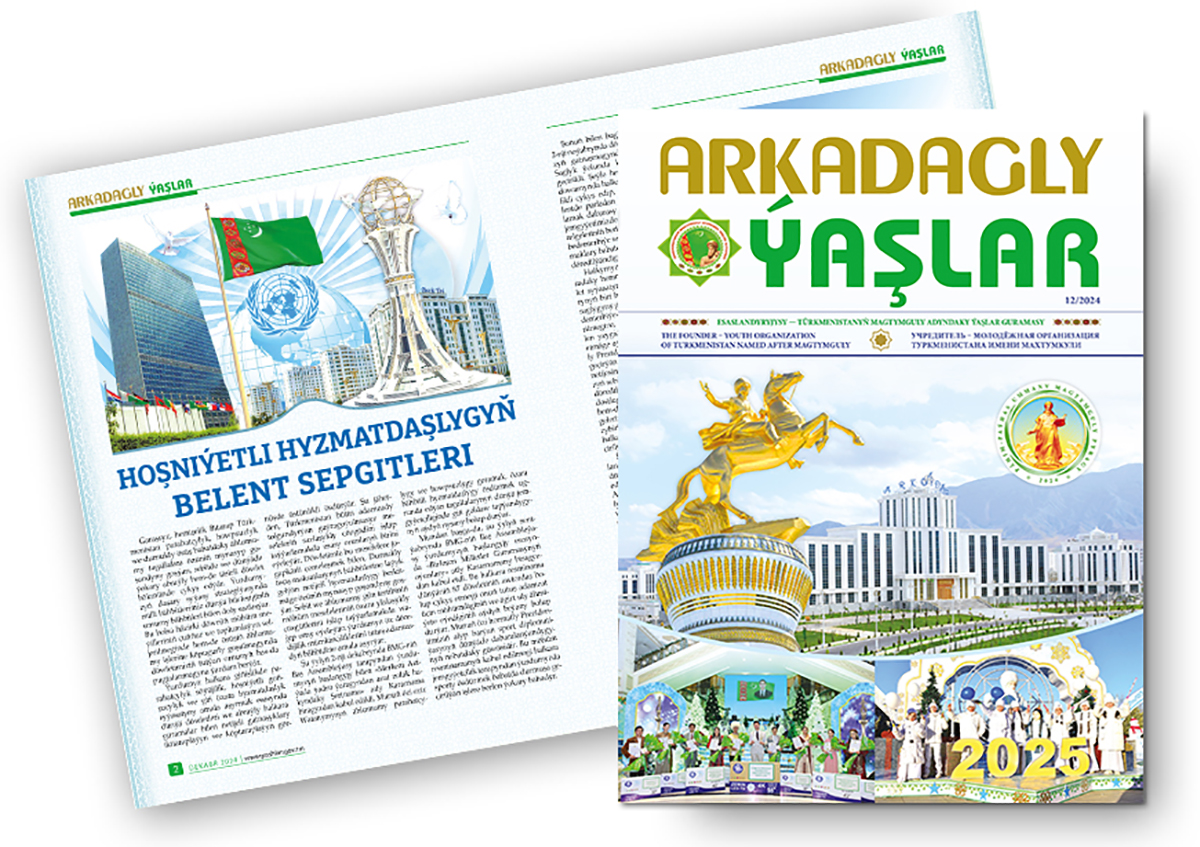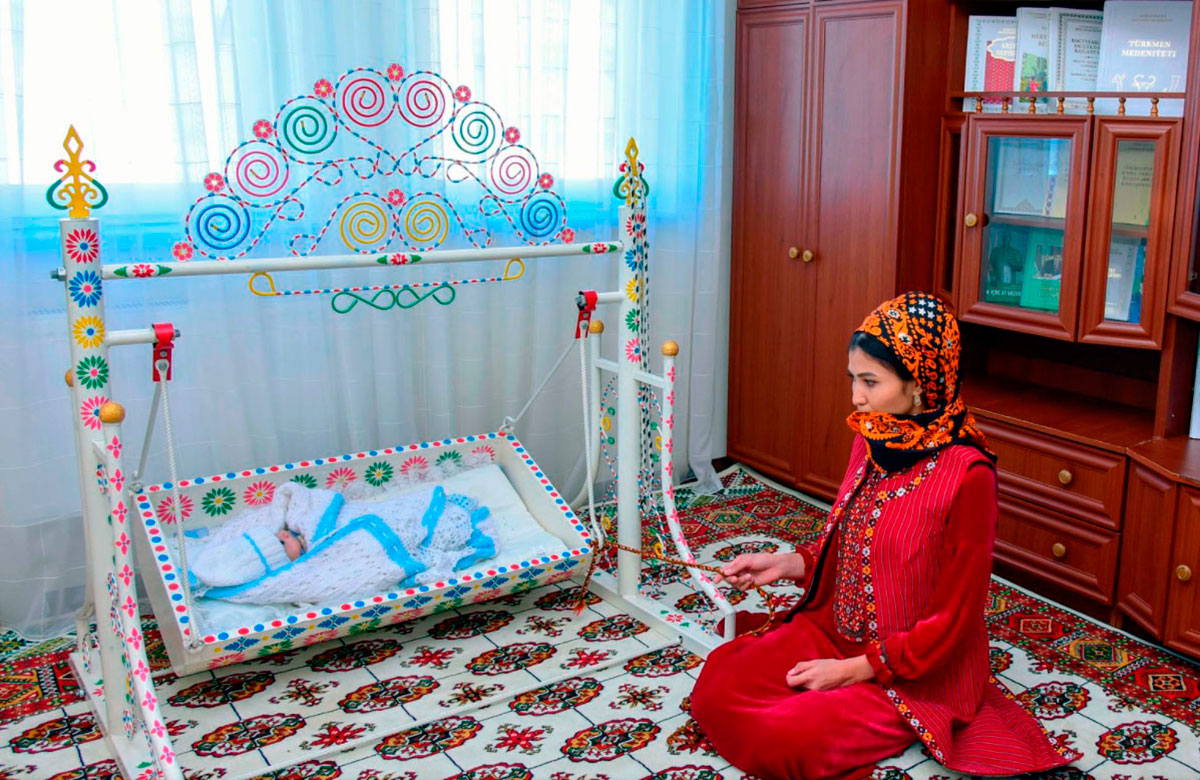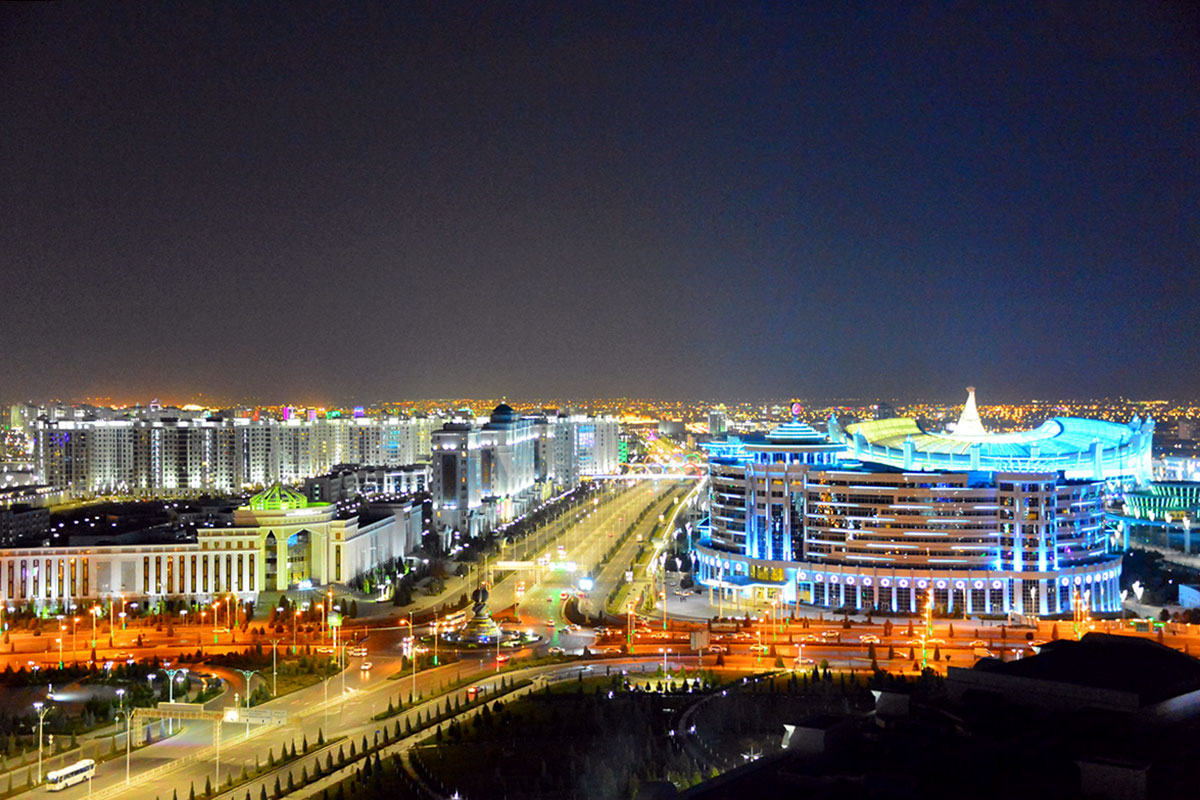The next issue of Miras quarterly popular science magazine, issued by the Magtymguly Institute of Language, Literature and National Manuscripts of the Academy of Sciences of Turkmenistan, has been published. The publication, addressed to a wide range of readers, includes a series of publications about new discoveries and results of research into the rich historical, cultural and spiritual heritage of the Turkmen people.
The first pages of the issue are devoted to the congratulatory Address of President Serdar Berdimuhamedov on the occasion of the Turkmen Alabay Holiday – the national treasure of our people, the International Day of Neutrality and the 28th anniversary of the permanent neutrality of independent Turkmenistan, as well as the New Year 2024.
“New Scientific Discoveries” traditional heading presents an article by Professor, Vice-Rector of Ningxia University (China) “Wisdom and Greatness of Magtymguly Reached Chin-Machin”, which emphasizes that the literary heritage of the outstanding thinker and poet Magtymguly Fragi belongs not only to the Turkmen people, but also to the whole world. His works also attracted the attention of Chinese readers. That is why “Collected Poems of Magtymguly” was translated into Chinese and published in this friendly country.
The author of the article notes that in June 2023, a seminar and literary evening were organized at Ningxia University, dedicated to the 300th anniversary of the birth of Magtymguly, where teachers and students exchanged their knowledge about the life and work of the poet, read his poems in the Chinese, Turkmen and Russian languages.
During this seminar, a short survey was conducted among students: “How do you understand Magtymguly?” As a result, all opinions boiled down to the fact that, filled with selfless and sincere love for his Motherland and people, the great poet called on the Turkmen tribes for unity. As noted, the deep ideological content of Magtymguly’s works is one of the components of the powerful philosophy of the countries of the East. The concepts of good and evil that he reveals in his works, his calm observation of human life, practical philosophical instructions – all this has a pronounced coloring of Eastern philosophy. Therefore, his poetry is very close to the Chinese reader.
The author of the article also emphasizes that “Magtymguly’s poems are the richest treasury of the Turkmen national spirit and national culture of the Turkmen people. In his poems, the poet describes such excellent qualities of the Turkmen people as kindness, hard work, strength, courage, perseverance and optimism. Magtymguly’s poetry gives a deep understanding and insight into the national spirit of the Turkmen people. His poems have always played an important role in the formation of the Turkmen national character and national spirit. Thus, Magtymguly’s poetry can help modern Chinese youth become more deeply acquainted with the Turkmen national character and culture of Turkmenistan.”
Although the world and social environment have undergone enormous changes over the past several centuries, the importance of the great poet-thinker and his poetry not only has not diminished, but on the contrary, Magtymguly’s ideas have become even more valuable for building a harmonious personality and forming a unified national state.
The same section presents the publication “The Fundamental Significance of the Political and Diplomatic Principles of Sultan Sanjar,” where we are talking about the famous Sultan of the Great Seljuk Empire, who played an important role in the medieval history of the East. The chronicle of the formation of statehood of the Turkmen people testifies to the deep traditions of conducting international affairs, foreign policy and diplomacy.
At the same time, the principles of peace, justice, neutrality and the desire to prevent wars and conflicts, mediation and humanity are fundamental. All these positions can be found in the Seljuk style of diplomacy. Ensuring peace and maintaining social stability across the vast territory of the powerful empire testify to the unprecedented skill of the Turkmens in governing the state.
Issues of the vital activity of the country, economic management, collection of taxes and payments, peace and security were considered at the maslakhat (community council, tribe), or at a national meeting, the participants of which were representatives of regional and inter-tribal unions – khan-beks. Nizam al-Mulk, vizier of Sultan Sanjar’s father and grandfather, in his work “Syyasatname” notes that “the most favorable decisions for the state are made when wise minds come together.”
To prevent wars, the Seljuk sultans sent envoys to their opponents. Also, the basis of Sanjar’s eastern policy was the concentration of government in the hands of one ruler and the pacification of rebellious vassals, that is, the desire to realize the concept of integrity and indivisibility. To maintain peace with their neighbors, the Seljuks used all foreign policy instruments, including dynastic marriages, which made it possible to further strengthen the unity in the state.
Thanks to Sanjar’s skillful diplomacy, international trade along the Great Silk Road, the main route of which was controlled by the Seljuks, was revived.
Also an interesting article “The plot of “Zohre and Tahir” in Turkmen folk art is presented to the attention of readers, dedicated to the works created by Oguz Turkmen, in particular, “Zohre and Tahir” destan, as well as the scientific research of scientists from different countries in this field. Based on this plot, which is widespread not only among the Turkic-speaking peoples, but is also known among the peoples of India and Arabia, numerous legends, fairy tales, stories, and folk destans have been created.
If we talk about the content of this work, then this is the love story of young people Tahir and Zohra. They grew up together, and even before birth, their fathers (the khan and his vizier) named their children bride and groom. After the death of the vizier, the khan changed his mind about marrying his daughter to an orphan, so he ordered to put the young man in a trunk and throw into the river. But Tahir did not die, and after long wanderings returned to his homeland. Zohra has already been married to a rich man. After Tahir’s execution, the girl refused to live without him.
The published article mentions five versions of Turkmen legends and fairy tales, which are based on the plot of “Zohre and Tahir”. As the author notes, the content of the destan refers to subject matters created by the Oguz Turkmens themselves. More precisely, this plot arose in the folk art of the Turkmens, and then gradually began to penetrate into the work of neighboring peoples.
Legends, fairy tales, and folk destans based on this plot are found among the Uzbeks, Tatars, Bashkirs, Uighurs, Azerbaijanis, Kazakhs, Turks and other Turkic peoples. A characteristic feature of these works is that prose alternates with poetry.
The “Interaction of Cultures and Civilizations” section opens with the “Traditions and Customs of the Turkmen (ethnographically)” publication. As it’s known, national cultural heritage, traditions and customs occupy an important place in the history of any nation. Developed by our ancestors, they contain social and everyday experience, as well as philosophical views about good and evil. One of the main tasks of science at present is the widespread study of spiritual values and their popularization.
Thus, the article, based on the collected ethnographic materials, analyzes, for example, the reasons why the first cutting of a baby’s hair was entrusted to his maternal uncle. According to elders, the bond between mother and child is head and shoulders above that of father. Therefore, the mother’s relatives were considered to be the closest for the child. The woman trusted her son more to her relatives.
There is such a belief. In former times, it was difficult for a married woman to visit her father’s house, so brothers and sisters met rarely. Out of sadness, the young woman found a way – she prepared gifts and asked her brother to personally come and pick them up. But several days passed, and my brother still did not come. Then she sent word to her brother that her sick son was suffering and asked him for help. Hearing this, the young man immediately came to his sister. In order to recover his sister’s son, he first shaved off his hair, since the first hair of a child is considered to be heavy and does not allow it to grow. After this, the baby began to recover quickly. The uncle helped his nephew, and the sister thanked her brother with silver equal to the weight of the cut hair. Since then, it has become a tradition to entrust the haircut to your uncle and thank him with silver.
The publication also reflects traditions and customs, events, and moments associated with braids – the decoration of girls and women, which originate from the depths of history. The growth and strength of women’s hair, which gives beauty to girls, young women, and women, depends on proper care and cleanliness. According to our grandmothers and great-grandmothers, braids were considered as a measure of female dignity and beauty. To keep them thick and long, from childhood they were looked after and decorated with various pendants, bells, and tips. A countless number of works by Turkmen poets are dedicated to women’s braids, which attracted the gazes of people.
The published material “Turkmen Sufi Literature and Khoja Ahmed Yasawi”, posted in the same section, examines the doctrine that was formed on the basis of centuries-old historical experience of the Muslim world by a system of worldviews about the knowledge of existence and eternity. Sufism is spiritual and physical purity, nobility and the desire for humanity is considered as one of the important trends in literature, the goal of which is to educate a decent, noble and honest person who fights evil, so as not to stray from the right path.
Khoja Ahmed Yasavi, a poet and great sage, was the first Sufi scholar who founded the path of Sufism – Yasavism. Each Sufi on this path receives a degree depending on his position and develops in a way of passing from one state to another. Such Sufis in a short time become individuals with rich experience, capable of showing the way to others, they gain spiritual strength. They are called shikh, murshid, pir, sufi-dervish. The goal of the Yasawi dervishes is to explain the people the frailty of the world, the temporary nature of wealth, and the possibility of achieving eternity with excellent morality and a pure spirit.
The mention of Sufism and the personality of Khoja Ahmed Yasawi in the philosophical and literary work of Hero-Arkadag Gurbanguly Berdimuhamedov “The Meaning of My Life” is the start for a thorough and truthful study of this great scientist.
The publication ends with the “Chronicle of Scientific and Cultural Life” heading, which provides an overview of the events in the social, scientific and cultural life of independent neutral Turkmenistan for the fourth quarter of the last year, which was held under the motto “Happy Youth with Arkadag Serdar” .
This section, in chronological order, reflects the progressive peacekeeping course pursued by President Serdar Berdimuhamedov and vivid evidence of socially oriented large-scale transformations, aimed at strengthening the economic power and further prosperity of the Homeland, improving the well-being of the people.
Published in Turkmen, English, and Russian printed at a high level, Miras magazine is colorfully illustrated with reproductions of paintings and photographs by contemporary masters, rare museum and archival materials and cartographic drawings, which serve as an excellent addition to the articles published on the pages of the next issue.
